The making of Baldur's Gate – the game that "single-handedly reinvigorated the western RPG"
With the remasters now out on modern consoles, we look back at BioWare's original smash RPG hit
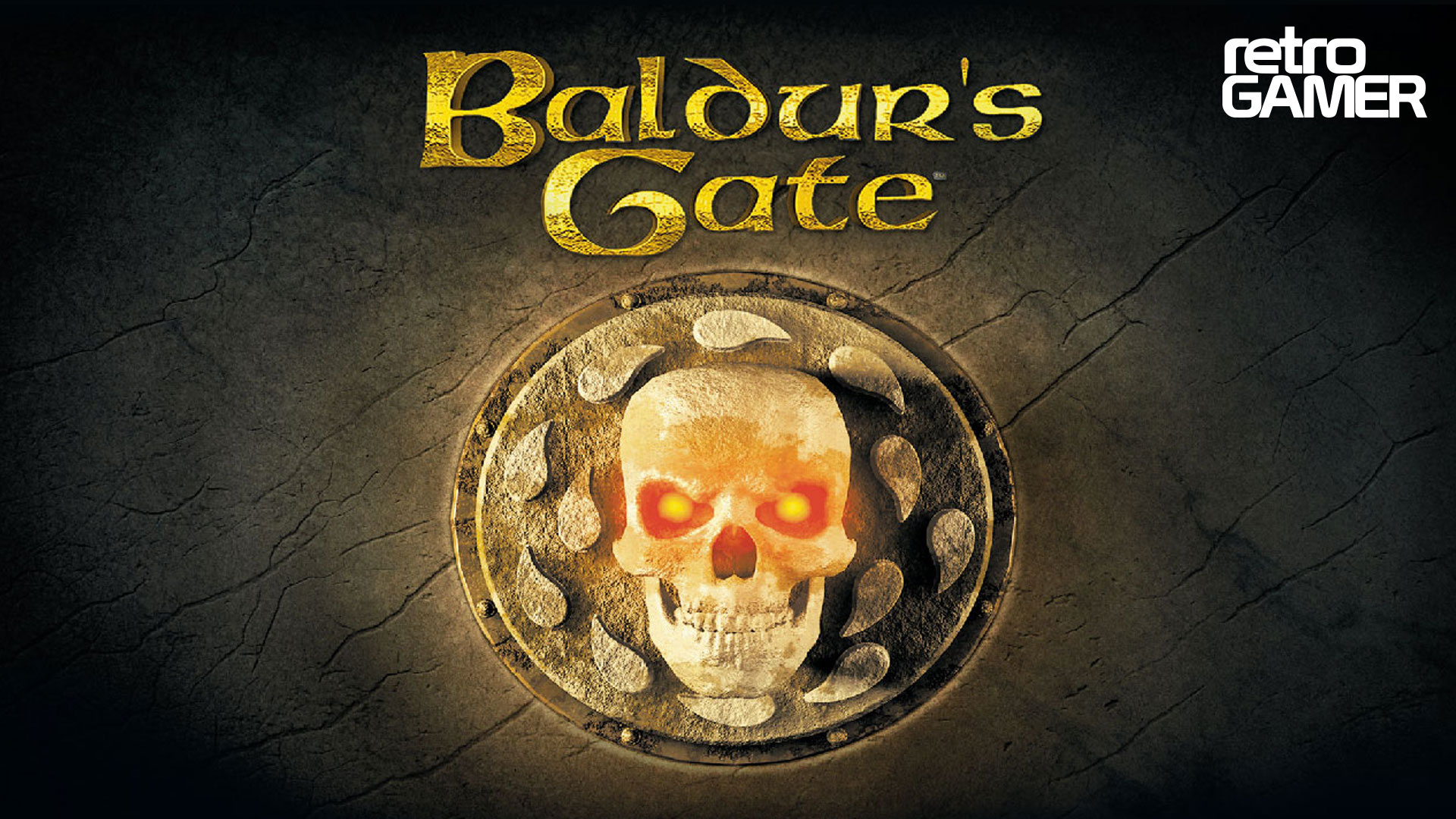
While 1996's Diablo appealed to action junkies with no respect for their mice, fans of more traditional computer RPGs experienced a severe drought of classic fantasy fare for much of the decade. Thankfully, Fallout came along late in 1997 ad proved that not only were PCs a great system for roleplaying, but the stat-loving, virtual-dice-rolling public was more than ready for its next RPG epic. Despite its popularity and what it did to reinvigorate role-playing on home computers, post-nuclear was not everyone's cup of irradiated tea, and gamers were clamouring for a return to Dungeons and Dragons. Right then, a fledgeling Canadian developer named BioWare was kicking off a project that would answer the call.
The company had released its first title in 1996; a mech combat sim called Shattered Steel, and was aiming to go real-time strategy for its next game. “Battleground Infinity was going to be about Ragnarok, the Norse end of days,” says Trent Oster, who worked as a modeller on the original Baldur’s Gate and is now heading up development of Baldur’s Gate: Enhanced Edition. “It was to be a game about all the ancient deities at war. The storyline never really got much development as the early focus was on building a technology prototype, which was hacked together out of a Direct Draw sample app. A rough demo was built showing off the big features (16-bit colour and all unique area art). The Battleground Infinity demo was sent around to many of the major publishers of the day and they all were not interested. Our producer at Interplay on Shattered Steel, one Feargus Urquhart heard about the demo and asked to see it.”
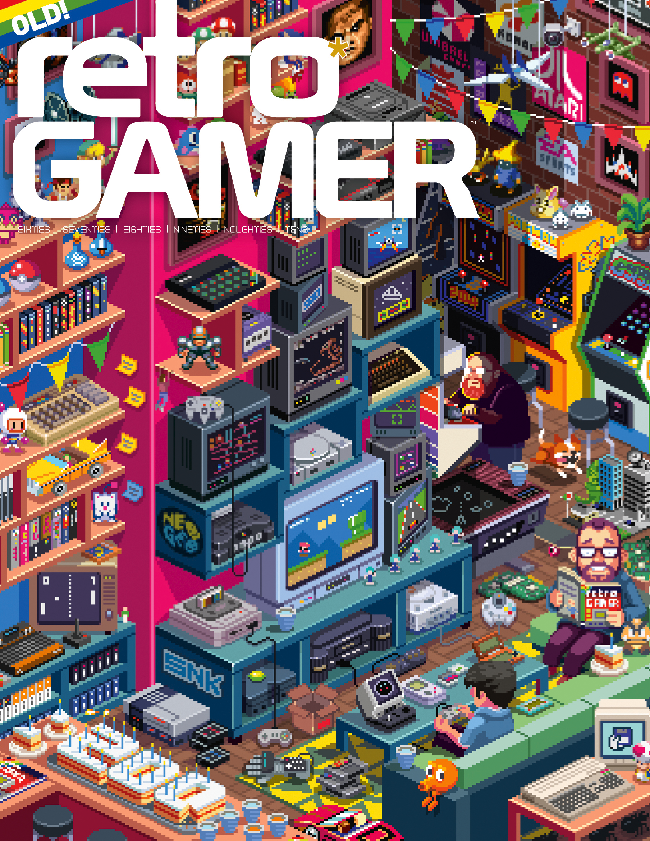
This feature first appeared in Retro Gamer magazine. If you want in-depth features on classic video games delivered straight to your doorstop (or your inbox), then you really should subscribe to Retro Gamer.
During Shattered Steel’s production, Urquhart was promoted to division head for Interplay’s newly created TSR Division, which would eventually be named Black Isle Studios. “As Shattered Steel was completing,” recalls Chris Parker, Black Isle Studios’ producer on Baldur’s Gate and currently project director for South Park: The Stick of Truth at Obsidian, “Feargus, Ray and Greg got together to talk about upcoming possibilities and they had a chocolate-and-peanut-butter moment: Feargus had the D&D licence and BioWare had an RTS-style RPG. The title was signed soon afterwards as Forgotten Realms RPG and would eventually become Baldur’s Gate.”
“Since everyone at BioWare was a total D&D fanboy at the time, the team jumped on the chance,” adds Trent. “Our licensing rep at TSR, a fellow named Jim Bishop hooked us up huge with source material. At one point I think James [Ohlen] had every 2nd Edition book in his office.” James, who was lead designer on Baldur’s Gate, had been running a pen and paper campaign set on the Sword Coast and it was an easy choice to use the titular city as the setting for the computer game.
“This was mainly because Baldur’s Gate was underdeveloped – no novels, game modules or much at all,” explains James, who is still with BioWare and now in the role of game director for Star Wars: The Old Republic. “RPGs are about allowing the player’s created character to be the hero of the story. When working within an established universe, you don’t want to set an RPG in a place that is already the focus of movies/TV/novels, because then you’ll have significant restrictions. Those restrictions make it difficult to tell an epic story where the player’s actions can have a significant impact.”
From RTS to RPG
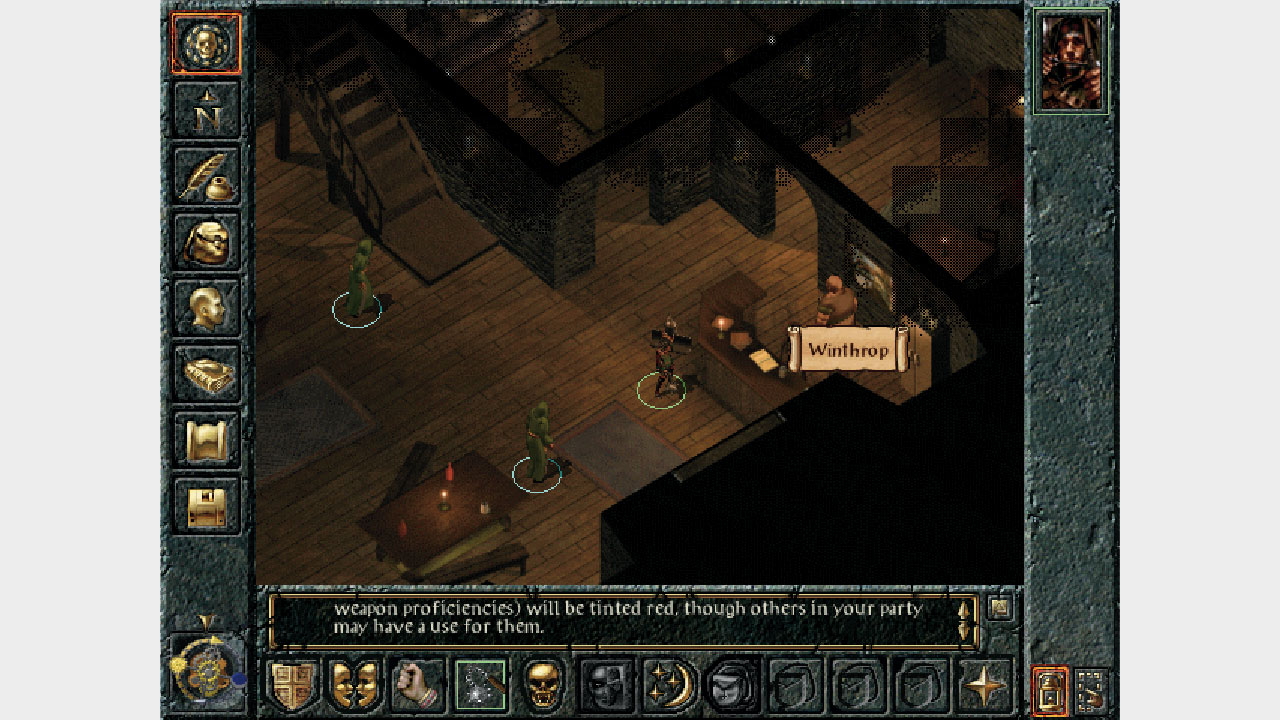
With a solid licence secured and campaign setting in hand, the small but steadily growing team at BioWare got to work completing the transformation of their prototype RTS technology into an isometric role-playing game, aiming high from the get-go. “From the outset the BG games were intended to be the next-generation of the venerated Gold Box games,” says Chris. “At the same time, the RTS genre was proving what you could do strategically in a real-time environment. It seemed like a natural idea to marry the real-time strategy of RTS games with the depth and party-based play of past-gen RPGs – and of course, it worked out very well once we figured out pausing with the spacebar.”
It was a transition that flowed perfectly: Battleground Infinity was no more – and the Infinity Engine was born. The addition of pausing mid-combat allowed the player to issue commands to party members in the heat of battle without the timing pressure present in an RTS. This included managing spell books, quaffing healing potions or getting your injured frontliner the hell out of the fray so they could change from melee to ranged weapons. It was a simple feature, but central to the Infinity Engine, and the same technology would go on to drive the likes of Planescape: Torment and the Icewind Dale series.
Sign up to the GamesRadar+ Newsletter
Weekly digests, tales from the communities you love, and more
Yet despite all its outstanding achievements, this experimenting with new features in the engine while at the same time designing a sprawling fantasy epic saw development time stretch considerably, taking two and a half years to complete. “The game went way over schedule,” says James, “but in the end it was all worth it. We were definitely not satisfied, but whoever is in game development? All of the things we weren’t able to do in Baldur’s Gate, we decided to put into Baldur’s Gate II.”
Despite the fact that the game has some shortcomings when held next to its sequel, particularly in the way of a number of relatively sparse and underdeveloped locations, BioWare had nevertheless crafted such a rich and engrossing world that players found themselves exploring every nook and cranny, pursuing every sub-quest, and striking up conversations with any NPC with a unique name or an unfamiliar look to them.
Total immersion
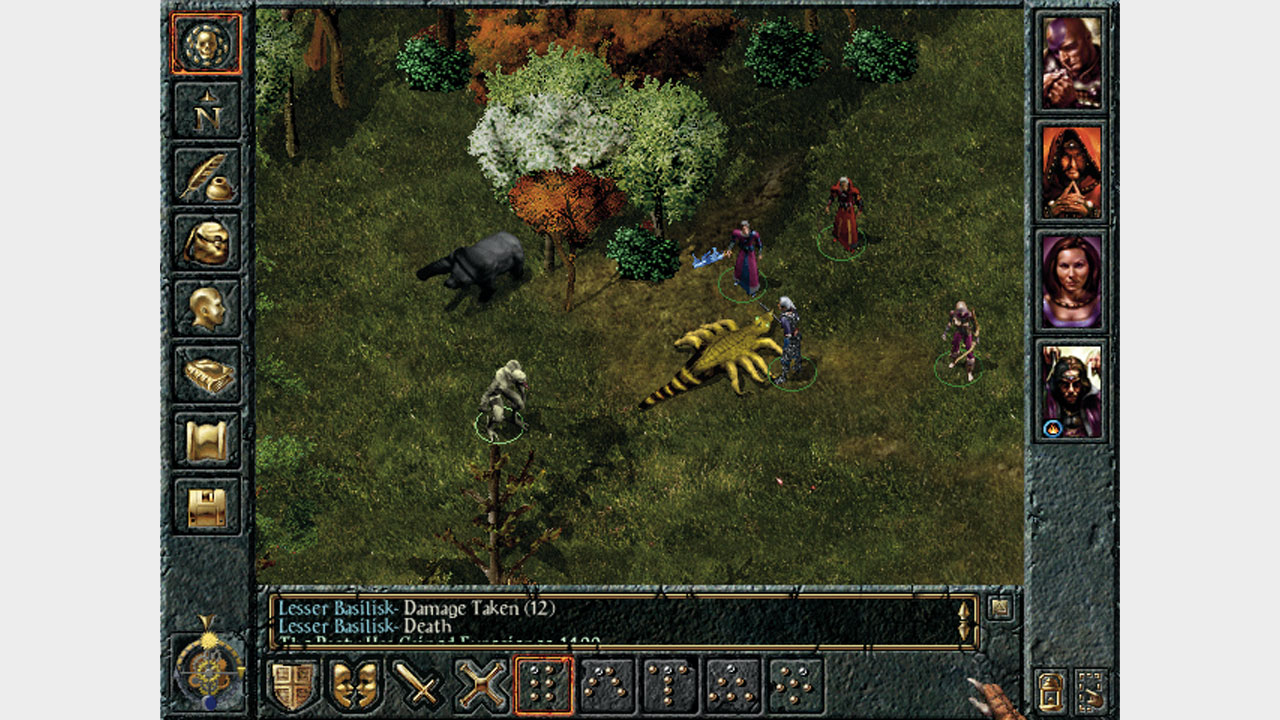
Further depth was added to the game through cameos from the likes of Elminster and Drizzt Do’Urden, drawing upon Forgotten Realms lore and history to appeal to fans familiar with the campaign setting. Indeed, as any who have been sucked into it
will attest, Baldur’s Gate grew into a game of total immersion, of throwing yourself into the Forgotten Realms, of placing yourself in this alternate reality from the moment you fired it up until the time you managed to end a session (“Are you sure you want to quit? Boo will miss you!”).
Given that not everything from the abundance of source material on hand could be included, the team found they needed to impose restrictions on what monsters appeared in the game. “We used three guidelines,” says James. “We wanted monsters that fans most wanted to see. We wanted monsters that worked for level 1 to 7 characters. And we couldn’t use monsters that didn’t exist on the Sword Coast.”
These proved only minor limitations as the game ended up being filled with an array of popular and familiar creatures, plus a few lesser-known enemies from the D&D canon. However, there were more challenging restrictions coming from D&D owners TSR. “TSR’s Code of Ethics was somewhat limiting and forced us to often boil everything evil down into simply ‘being greedy’“, says Chris. “This one dimensional portrayal of evil was limiting but wasn’t something that prevented the team from accomplishing its larger goals for the content in the game. We were still able to tell the story we wanted to tell, we still allowed you to be as greedy or psychotic as you liked while you were playing, there just weren’t as many ramifications to being evil, or as many avenues to it, as we would have liked.”
Sure enough, this limited freedom to flesh out the ‘evil’ side of the game saw most quests and indeed the core plot playing out much better for good or neutral aligned characters. But while this aspect of the game was criticised by a handful of hardcore roleplayers, the finished product was hardly tarnished by it, and the critical and popular success of Baldur’s Gate proved this.
Roll for critical hit!
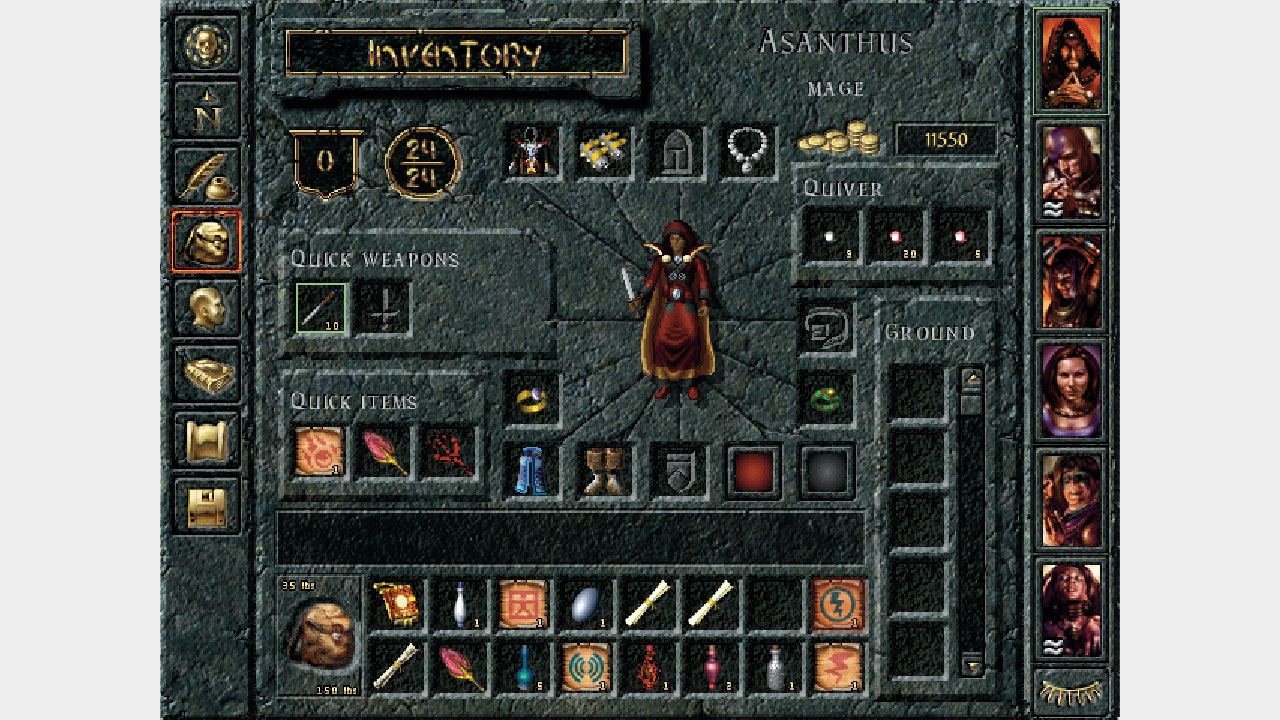
It garnered rave reviews, sold millions of copies and won RPG and Game of the Year awards around the world – not bad for BioWare’s first role-playing game and second ever title. Even more impressive when you consider that many of the team had never published a videogame before. “As the team was finishing up the product I think everybody knew it was going to be successful,” recalls Chris. “It was generating an immense amount of press and forum buzz and wherever we showed it people told us they couldn’t wait to play the game. I don’t think anybody at BioWare or Black Isle Studios understood the extent to which the game would be successful. Personally, I was hoping the game would exceed a half million units, which would be hugely successful for a PC game at that time, but it did something like four times that in its first year and continues to sell today. I attribute that success to an unbelievably devoted, hard-working team that wanted to make a game with a huge depth of high-quality content that was easy and fun to play. Although it was probably the most difficult product I’ve had to finish, it has been among the most rewarding.”
Baldur’s Gate’s undeniable quality, lasting appeal and dedicated fanbase has seen it enter into that elite group of games that have been immortalised by a massive online following who regularly release mods, content packs, resolution patches and other tweaks to the core game. It is now 14 years since it was first released and people are still talking about it, replaying different character builds, and showing enough interest to justify Trent and his team at Overhaul Games to produce an Enhanced Edition remake (see box-out).
“I think Baldur’s Gate still resonates with people because it single-handedly re-invigorated the western RPG,” he says. “At a time when most publishers refused to fund any RPG games, believing the genre dead, BioWare was able to take the time to lovingly craft a great game in a loved setting. The combination of technology, love of the rules system and a deep knowledge of the lore allowed the team to create something fantastic. I feel since then as an industry we’ve been a little blinded by technology and lost some appreciation of the telling of a wonderful story.”


